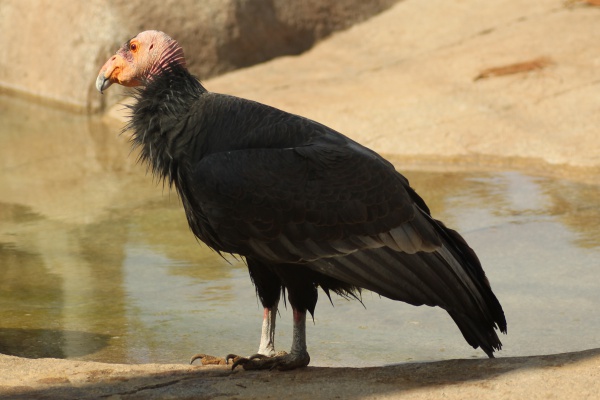Facts About California condor
The California condor, North America's largest land bird, once teetered on the brink of extinction but has made a remarkable recovery since its reintroduction in 1987. This New World vulture, the sole surviving member of the genus Gymnogyps, is critically endangered. Notable for its striking black feathers, white wing patches, and a bald head that changes color with age, the condor boasts an impressive wingspan of about 10 feet (3 meters) and can weigh up to 26 pounds (12 kilograms). As scavengers, they feed on carrion and can live up to 60 years.
The condor population plummeted due to poaching, lead poisoning, and habitat destruction. However, dedicated conservation efforts, including captive breeding and reintroduction programs, have helped boost their numbers. As of 2018, there were 488 California condors either flying free or in captivity. This majestic bird also holds cultural significance for many Californian Native American groups, featuring prominently in their myths and traditions.
Scientifically, the California condor belongs to the family Cathartidae in the order Cathartiformes. Its ancestors date back to the Pleistocene epoch, making the current species a living relic. Condors thrive in habitats such as rocky shrublands, coniferous forests, and oak savannas, where they nest near cliffs or in large trees.
Behaviorally, condors are expert soarers, utilizing thermal updrafts to glide effortlessly through the sky. They form complex social structures and have long lifespans, sometimes reaching up to 60 years. These birds are monogamous, forming lifelong breeding pairs, with females laying one egg every other year. Conservationists have tackled various threats to condors, such as lead poisoning, collisions with power lines, and habitat loss.
Efforts to save the California condor have shown significant progress, with milestones in nesting, population growth, and range expansion. Programs like the Condor Recovery Plan and various reintroduction initiatives have been pivotal in these successes. Projects such as Condor Watch also involve citizen scientists in monitoring and protecting these birds.
In Native American mythology, the California condor is a revered figure, appearing in numerous cultural stories and rituals. Different tribes across its historic range have their unique interpretations of the bird's role, from creation myths to symbolic representations in ceremonies.

 Guatemala
Guatemala